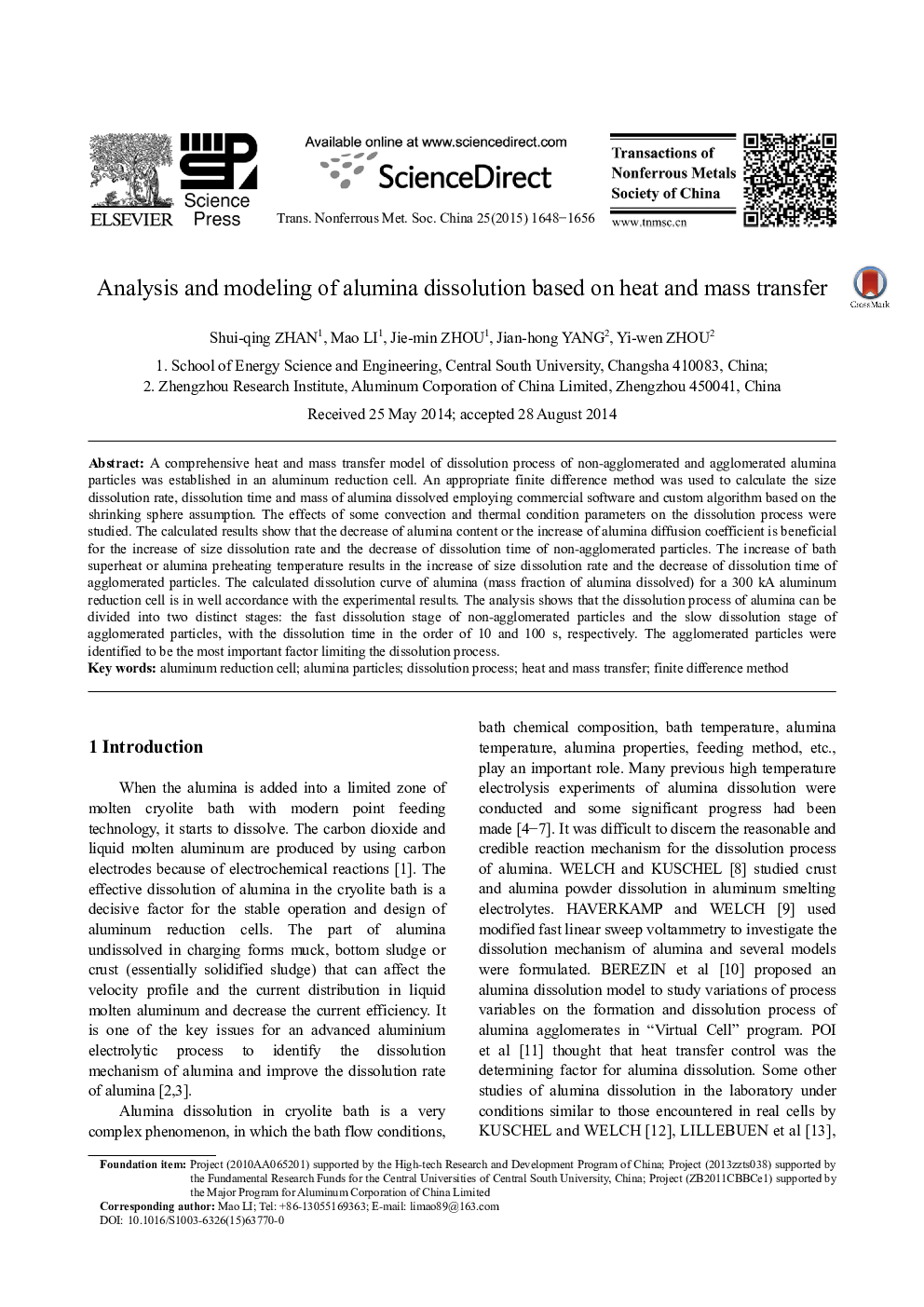| Article ID | Journal | Published Year | Pages | File Type |
|---|---|---|---|---|
| 1636681 | Transactions of Nonferrous Metals Society of China | 2015 | 9 Pages |
Abstract
A comprehensive heat and mass transfer model of dissolution process of non-agglomerated and agglomerated alumina particles was established in an aluminum reduction cell. An appropriate finite difference method was used to calculate the size dissolution rate, dissolution time and mass of alumina dissolved employing commercial software and custom algorithm based on the shrinking sphere assumption. The effects of some convection and thermal condition parameters on the dissolution process were studied. The calculated results show that the decrease of alumina content or the increase of alumina diffusion coefficient is beneficial for the increase of size dissolution rate and the decrease of dissolution time of non-agglomerated particles. The increase of bath superheat or alumina preheating temperature results in the increase of size dissolution rate and the decrease of dissolution time of agglomerated particles. The calculated dissolution curve of alumina (mass fraction of alumina dissolved) for a 300 kA aluminum reduction cell is in well accordance with the experimental results. The analysis shows that the dissolution process of alumina can be divided into two distinct stages: the fast dissolution stage of non-agglomerated particles and the slow dissolution stage of agglomerated particles, with the dissolution time in the order of 10 and 100 s, respectively. The agglomerated particles were identified to be the most important factor limiting the dissolution process.
Keywords
Related Topics
Physical Sciences and Engineering
Materials Science
Metals and Alloys
Authors
Shui-qing ZHAN, Mao LI, Jie-min ZHOU, Jian-hong YANG, Yi-wen ZHOU,
